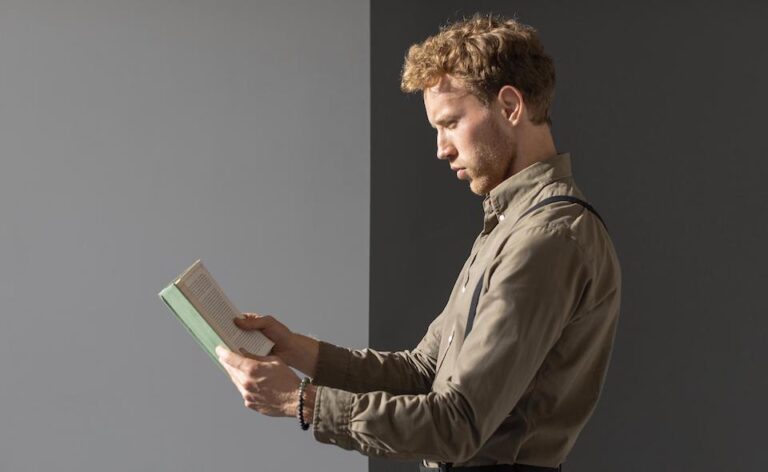
I know what you’re thinking. Financial stability is a pipedream one can’t hope to achieve in this lifetime, not with the rate of taxes and all the debt piling up.
To that, I would say there is still hope. This hope comes in the form of knowledge. Simple changes to your spending habits can mean all the difference. Unfortunately, many Canadians are still in the dark about how to control their finances. According to the Government of Canada, only about half (49%) of Canadians have a budget (1).
Let me paint a picture — one where you have financial stability and one where you don’t. In the version of your life where you lack financial stability, there’s palpable dread waiting for the 15th of every month when your credit card payments are due. There’s an ache in the longing for payday when you’ll finally be able to afford gas, groceries, and rent.
On the other hand, in the picture where financial stability is a real and true fact of your life, everything is so much brighter. You have extra that is placed in a savings account each month. You don’t have to worry if your car breaks down since you have an emergency fund all setup and ready. You can buy what you want at the boutique without having to worry about the price. Life is just better.
Learning how to be financially stable is a real and tangible goal, and I will share three easy steps for achieving it. I will also explain what financial stability is so you can quickly regain your financial freedom.
Let’s take a look.
How Do We Define ‘Financially Stable?

Being financially stable means not waiting for payday so you can get groceries or pay off your credit card. It also means having enough income to cover your expenses, never feeling stressed due to the threat of debt, or being unable to pay for anything. Finally, it means your books are balanced, and you are saving a little every month in an emergency fund. This is how we define financially stable.
At its core, financial stability is a very personal journey that will look different for everyone. It’s about discovering that balance in your life where you have peace of mind about your finances. If you have peace of mind, it’s very likely that you are financially stable.
How to be Financially Stable: Creating Your Blueprint
Learning how to be financially stable and creating your blueprint for success can be accomplished in as little as four simple steps. These steps are listed below:
- Build a budget.
- Reduce expenses.
- Increase income.
Step 1 — Build a Budget

Building a budget is the first step to taking control of your finances. A budget helps you discern how much you make, how much you spend, and whether your books are balanced. But let’s not make it complicated; Building a budget can be broken down into three easy parts:
- Calculate your net income.
- List your monthly expenses.
- Define which expenses are fixed and which are variable.
- Figure out the monthly average in expenses.
Calculate Your Income
I think calculating your income is one of the top steps in learning how to be financially stable. It’s simple, effective, and gives you a roadmap of where you want to go.
If you earn a paycheck every two weeks, you will want to determine the monthly amount you receive. You have to be sure this is after taxes, so you have as accurate a picture as possible of what your take-home amount is. If you are a freelancer or own a business, you will want to calculate your income after accounting for tax deductions.
Monthly Expenses
After calculating your income, you will want to list your monthly expenses. I know what a lot of my regular expenses are each month, and these are mainly universal, so I’ll share some below:
- Rent.
- Credit card payments.
- Groceries.
- Gym membership.
- Eating out and traveling.
- Gifts and shopping.
Which Expenses are Fixed and Variable
Alright, this point in making your budget is crucial and requires you to be as honest as possible. You have to label which expenses are fixed and which are variable. Fixed expenses mean they come every month, their price doesn’t change, and they’re predictable. Variable expenses, on the other hand, aren’t necessarily crucial and can even be avoided entirely, like eating out or travelling.
Keep these labels on hand, as you will implement them later when you adjust your lifestyle based on your budget.
Monthly Average in Expenses
Now, you’ll want to take all your expenses and figure out the average for them. For fixed amounts, this is easy to determine. But for amounts that change, like your electrical bill or how much you spend on groceries, you will want to take the numbers for three months, add them together, and divide by three to determine the average. Then, set the limit for each of these in your budget. For example, if you spend $525 on groceries monthly, round it up to $550 and set the limit there.
Tools for Budgeting
In this day and age, you have all kinds of tools at your disposal to create a detailed and easy-to-access budget. I like the old-fashioned attraction of a pen-and-paper budget, but that might not suit everyone.
Instead, there are free tools like Google Spreadsheets or apps that specialize in budgeting like:
- YNAB (You Need a Budget). An app that specializes in focusing on your current financial situation and giving every dollar a purpose.
- GoodBudget. A digital way to split your budget into little ‘money envelopes,’ where everything is labeled for their purpose.
- PocketGuard. A visual representation of your budget with everything divided into a pie-chart. It shows you how much you have to save or spend after accomplishing your goals like meeting bills and savings.
Benefits of Budgeting
One of the key benefits of budgeting that I really enjoy is the fact that you can get a crystal clear picture of your personal finances in as little as a few minutes. Your budget is like a piggy bank — if you use it, it can’t help but help you. And by using it, I mean reviewing it every once in a while. Your budget has a superpower — being able to show you if your spending is on track or not. Using this superpower, you can determine if you are on the right track and learn how to be financially stable.
Key to Success: Regular Review of Your Budget
Keeping a budget is like exercising. If you don’t go out regularly for runs, you’re going to lose your progress and fitness. Similarly, I find budgets are most effective when they are regularly reviewed, at least once a month or once a week. Ask yourself, “Am I on track? Do I need to cut back in certain areas or redirect funds?” Looking at your budget honestly will help ensure it’s functioning as smoothly as possible for you.
Step 2 — Reduce Expenses

Reducing expenses is a critical part of learning how to be financially stable, and there are many ways to go about this. I’ve listed a few major ways below:
- Crack down on the ‘variables’ you listed in your budget.
- Reduce housing and transportation costs.
- Reduce food costs.
Budget ‘Variables’
Looking at the budget ‘variables’ you defined earlier will help tremendously with gaining financial freedom. You will want to look at everything not necessary, such as a gym membership or eating out, and cut back. For example, you could drop the gym membership and instead opt to run around your neighborhood and cut dining out to once a month from once a week. If money is super tight, you can opt to cut out dining out, traveling, and shopping for pleasure entirely until your finances are in a better state.
Reduce Housing and Transportation Costs
A good place to cut costs is in housing and transportation. If you live in a large home you struggle to afford, consider downsizing to a smaller apartment. You can also consider renting out a room so someone else can help with rent or mortgage costs.
You will also want to consider your transportation carefully. If you own a truck that guzzles gas, consider trading it in for a more economical and smaller car. It is also a good idea to shop around several places for the best insurance rates so you know you’re getting the best deal. In a worst-case scenario, you can opt for taking public transportation, using bikes, and other more cost-effective transportation to get around your hometown.

Reduce Food Costs
Another great way to regain financial control is to be careful about how you spend your budget on food. Your money will go further if you opt for whole foods and grains instead of packaged foods. Planning your groceries also gives you the added benefit of buying in bulk, which is another way to save money.
Also Read: Top 10 Best Personal Finance Books
Additional Tips That Will Help You Save Daily
I know it’s hard to say no, but the more you take these tips I’m about to share to heart, the more you’re going to have in your pocket at the end of the month.
- Avoid impulse purchases. Yes, when you see candy in bulk at the grocery store, or a really cute sweater in the shopping aisle, you have to say no. Cut out as many impulse purchases as possible. Instead, make sure they are planned.
- Reduce electricity costs. When you are out, turn off the heating and unplug devices from their outlets so you can save more.
- Have morning coffee at home. Instead of taking your coffee outside, make it at home so you can save those dollars every week.
- Prep your own food. Instead of eating out, prep your food at home so you dine-in, saving costs.
- Reduce meat. We all know meat is costly. To save, try to reduce your meat from once every few days to once a week, thereby reducing costs.
- Drive efficiently. When driving, drive consistently. If you drive at 100 km/h, you will save 20% more gas than driving at 120 km/h.
- Bundle your services. When purchasing internet and cable, buy these services together to get a better deal.
- Buy things second-hand for your children. Gifts and clothing should all be bought second-had to ensure they are as cost-effective as possible.
- Government subsidies for children. You are eligible for government subsidies through a Registered Education Savings Plan (RESP).
- Tour locally. Instead of traveling overseas, tour locally in your province so you can still enjoy, but save on costs.
- Enjoy free activities. Look into your town or city’s official website, where free activities are usually listed, and enjoy a day or night out while saving.
- Pay your mortgage fast. Avoid interest by paying off your mortgage faster and making additional payments.
Pay off your credit cards. When it comes time to pay off your credit cards, pay them off in full so you are not accumulating interest.
Step 3 — Increase Income
Now, here is the kicker — The only way you can truly utilize a budget is if you gain more of an income. This is what we will look at in this section:
- Build a Savings Account
- Earn more.
- Invest.
Build a Savings Account
Now, there are a number of ways to go about building a savings account, but the main focus is to build a buffer to cushion any unexpected payments that come up. I’ve listed some ways to build your savings below:
- Build a buffer in your checking account. I like to think of a buffer as a few extra hundred dollars, or however much you can afford, as money that is untouched in the account. That way, you never reach $0, and you have some emergency money stashed here for a rainy day.
- Start an emergency fund. An emergency fund is similar to a buffer in your checking account, but it normally has its own place. You can make this physical or put your emergency fund in a savings account. This way, you have another stash of money ready in case anything happens.
- Create automatic savings. What’s even better than creating an emergency fund is to make that fund automatic. I like this because it makes it so you have one less thing to worry about. You can talk with your bank that when your paycheck comes in, it is automatically split into your checking and savings on a specific day.
Build a good credit score. I can’t stress how important a good credit score is. If you have this, you have access to mortgages and investments for business, among other things. Always pay off your credit cards and bills on time so you never get late fees or are placed in arrears.
Earn More
If you’ve ever worried about asking your boss for that raise, this is me giving you permission that it’s okay to ask. This is one of the best things you can do, and you can earn that raise by making yourself more of a heavy hitter in the office. Consider getting qualifications so you can finally put ‘Head Specialist’ instead of simply ‘Specialist’ on your business card.
Look at your job market. If the average position is worth less than what you’re being paid at your workplace, it may even be time to consider bringing this up to your boss, or choosing a different workplace where you can re-negotiate a fair price for your salary.
If going the conventional way and increasing your position at your job isn’t working, you can consider a more radical option, like starting a side hustle. You can also consider changing your niche or area of occupation. For example, if you’re in business administration and you have a knack for computers, you could switch to being an IT specialist.
A side hustle is where your skills can truly shine, and you might even have some fun at the same time. Below, I’ve listed some ways that you can earn more for your budget:
- Freelance.
- Sell your art.
- Create an online course.
Freelance
If you have a highly desirable skill, such as coding, navigating the backend of Amazon, or content writing, you can consider freelancing that skill in your free time. This way, you can earn money from the convenience of your computer, no matter where you are.
Sell your Art

If you have talent in your fingertips, the world is more connected and ready than ever to accept your art in online e-commerce. Creating your own store at places such as Etsy or Shopify is a great way to start earning an income on the side.
Create an Online Course
Do you have knowledge or skills that could benefit the workforce or world in general? You can cultivate all that knowledge and present it in a paid online course, teaching people in bite-sized pieces how to do what you do. This is a great way to earn a passive income that requires no effort once the course is made.
Invest
Investing is a great opportunity. But I must stress that investing is also a calculated risk. Never invest more than what you can afford, and be prepared to lose it in a worst-case scenario. When investing, always ask a professional for help.
Many people, however, have found great success with investing, and it is absolutely something to consider when wanting to earn more for your income.
When investing, I always recommend people to diversify your portfolio. This means to avoid putting all your eggs in one basket. When you have stocks in more than one company, brand, or niche, you are more likely to get a greater return on your investment.
Depending on your age and risk tolerance, your portfolio will be more or less aggressive. We want to take more risks when we’re young and less when we’re reaching retirement age, right? In your portfolio, your risk tolerance will also be gauged. Some will be okay with losing $2000 on stocks, while others would be outraged. This is factored in so you have as risk-free a time as possible.
Also Read: What is Personal Finance
Implement What You’ve Learned
At the end of the day, I want you to grow, and the best way to do that is by implementing what you’ve learned in small ways to make an overall impact.
Thinking of finances as a big, monumental task makes starting difficult. Instead, focus on the small things you can do today to gain more financial freedom. Even something as small as setting aside $10 every week to your savings account or enrolling in an online course for a few hours every week to get paid more.
What are your thoughts on how to be financially stable? Let us know in the comments below!
Additional References:
- Government of Canada (2019.) Canadians and their Money: Key Findings from the 2019 Canadian Financial Capability Survey. Retrieved from: https://www.canada.ca/en/financial-consumer-agency/programs/research/canadian-financial-capability-survey-2019.html



